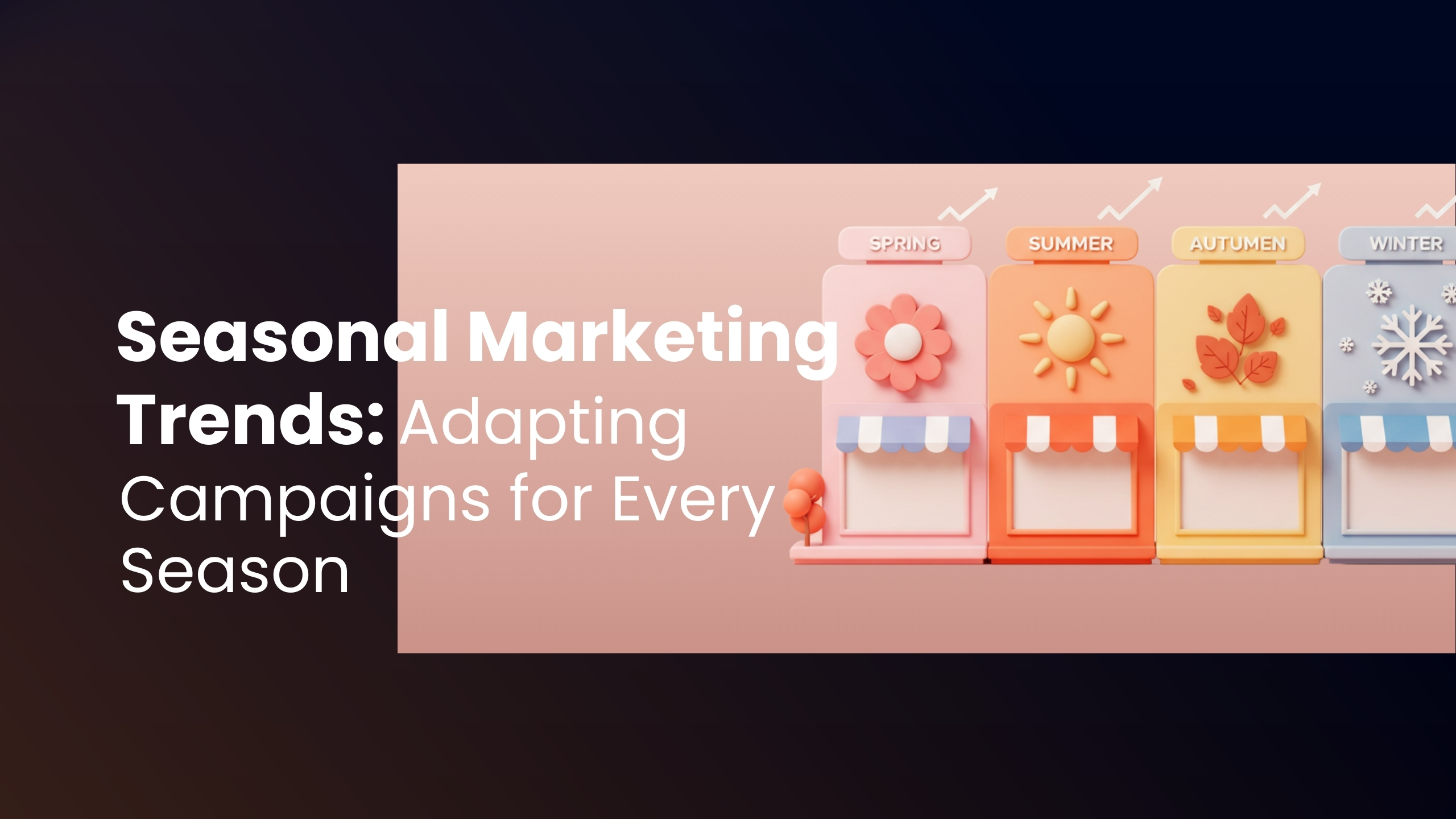Seasonal Markseting Trends: Adapting Campaigns for Every Season
Seasonal changes bring unique consumer behaviors and opportunities. For e-commerce businesses and retailers, adapting your marketing campaigns to reflect these shifts is essential for sustained success. In this guide, we explore actionable strategies and data-backed insights to help you tailor your campaigns for spring, summer, autumn, and winter.
- Understanding Seasonal Marketing Trends
a. Why Seasons Matter:
Each season affects consumer mood, spending habits, and even product preferences. By recognizing these trends, you can better align your marketing message with what customers are seeking at that time.
b. Data-Driven Insights:
Use historical sales data and consumer behavior reports (from sources like the Australian Bureau of Statistics or trusted market research firms) to understand seasonal demand and adjust your inventory and promotional strategies accordingly.
- Spring Campaigns: Embrace Renewal and Growth
a. Fresh Visuals and Messaging:
Use bright, uplifting colors and imagery that evoke renewal—think florals, greenery, and light pastels.
b. Promotional Strategies:
Offer deals on new product launches or seasonal refresh items.
c. Digital Engagement:
Run social media contests encouraging customers to share spring-inspired moments.
- Summer Campaigns: Capture the Vibrant Energy
a. Festive, Energetic Themes:
Incorporate vibrant colors such as bright blues and sunny yellows that reflect the warmth and energy of summer.
b. Promotional Tactics:
Leverage flash sales, bundle deals, and free shipping offers that encourage impulse buying during the high-traffic season.
c. Interactive Experiences:
Enhance the digital shopping experience with interactive elements like virtual try-ons or AR displays to showcase summer products.
- Autumn (Fall) Campaigns: Emphasize Comfort and Change
a. Warm, Cozy Visuals:
Use rich, earthy tones like deep oranges, browns, and muted reds to create a cozy atmosphere that resonates with autumn vibes.
b. Targeted Promotions:
Focus on products that provide comfort or prepare customers for the cooler months, such as home essentials, fashion, and accessories.
c. Content Marketing:
Share stories or customer testimonials about personal transformations or new beginnings during autumn.
- Winter Campaigns: Drive Holiday Excitement and Savings
a. Festive, Inviting Imagery:
Embrace a color palette that includes rich reds, golds, and deep blues to evoke holiday cheer and a sense of warmth during the winter months.
b. Holiday Promotions:
Implement limited-time offers, exclusive bundle deals, and flash sales to create urgency and boost conversions during the busy holiday season.
c. Customer Engagement:
Run interactive social media campaigns, contests, or giveaways that encourage sharing of holiday experiences and product reviews.
- Adapting Campaigns with Data-Driven Strategies
a. A/B Testing:
Continuously test different promotional messages, visuals, and website layouts to determine what resonates best with your audience during each season.
b. Real-Time Monitoring:
Use analytics tools to track key performance indicators (KPIs) such as conversion rates, average order value, and website traffic. Adjust your strategies in real time based on these insights.
c. Customer Feedback:
Leverage surveys and social media polls to gather direct feedback from customers. Use this data to refine your approach for future seasonal campaigns.
FAQ
Q: How do seasonal trends affect my marketing campaigns?
A: Seasonal trends influence consumer behavior, from spending habits to product preferences. Adapting your marketing to these trends helps ensure your promotions resonate with customers at the right time.
Q: What are the most effective channels for seasonal marketing?
A: Email marketing, social media (especially Instagram and Facebook), and targeted digital advertising are highly effective channels for seasonal campaigns. Influencer collaborations can also extend your reach.
Q: How can I measure the success of my seasonal campaigns?
A: Track KPIs such as conversion rates, average order values, and website traffic using analytics tools. A/B testing and customer feedback are also essential for refining your strategy.
Conclusion
Adapting your marketing campaigns to align with seasonal trends is essential for staying relevant and competitive. By understanding the unique demands of each season—whether it’s the renewal of spring, the vibrant energy of summer, the cozy warmth of autumn, or the festive spirit of winter—you can craft targeted, data-driven promotions that drive sales and build lasting customer relationships.
Share your seasonal marketing success stories in the comments or contact our team for personalized advice on adapting your campaigns. Let’s work together to create marketing strategies that shine every season!

